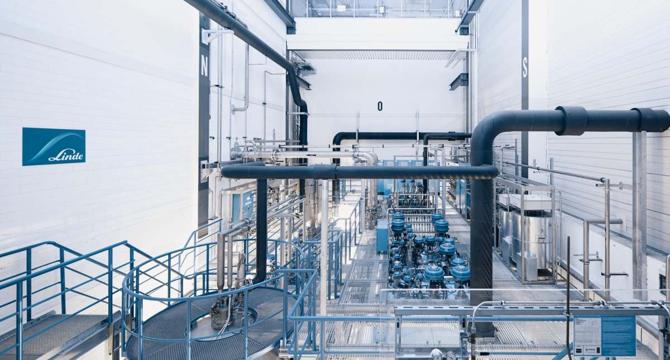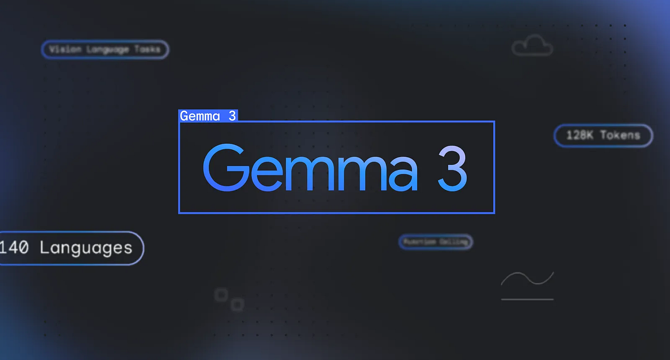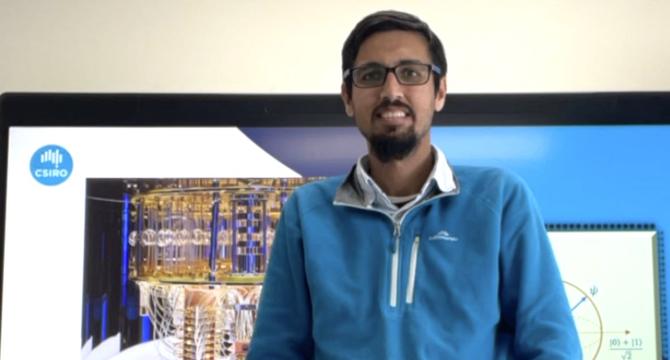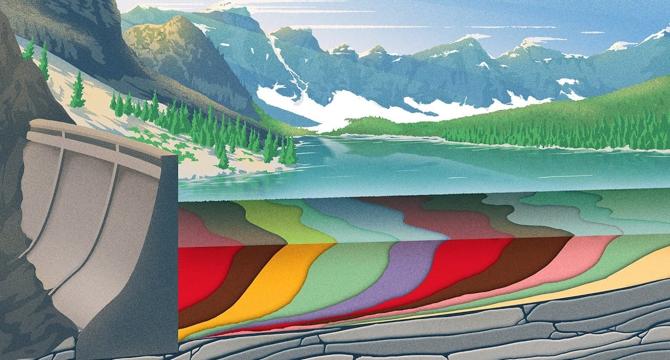Computer Engineering
COSMOS
73

Image Credit: COSMOS
Milestone in bid to build world’s first large-scale quantum computer in Australia
- One of the world’s largest cryogenic cooling plants will be built in Brisbane, Australia for constructing the first large-scale quantum computer.
- Linde Engineering has signed an agreement with US company PsiQuantum to cool the new quantum hardware to -269°C.
- PsiQuantum aims to build a 'useful' quantum computer by 2027 with photonic chips called 'Omega', allowing for less frigid temperatures for operation.
- The investment in the project from Australian federal and Queensland state governments amounts to about A$1 billion, with potential applications in climate modeling, drug discovery, clean energy, and artificial intelligence.
Read Full Article
4 Likes
Medium
362

Image Credit: Medium
Next-Gen RAG with Couchbase and Gemma 3: Building a Scalable AI-Powered Knowledge System
- Retrieval-Augmented Generation (RAG) combines retrieval-based search with generative models for AI applications.
- Couchbase offers speed, scalability, and flexibility with features like Memory-First Architecture and Built-in Full-Text Search.
- Gemma 3, an open-source generative AI model, is optimized for efficiency and local machine deployment in RAG applications.
- The tech stack includes Couchbase for vector database, Gemma 3 for generative responses, and FAISS for vector similarity search.
Read Full Article
21 Likes
Medium
380

Universal Resonance Model (URM) – Draft Paper v6 – Mathematical Foundations & Coherence-Only…
- Universal Resonance Model (URM) Draft Paper v6 focuses on Mathematical Foundations & Coherence-Only Expressions.
- The model introduces a single scalar field C∈[0,1] as a fundamental quantity, with various derived quantities and observable mappings.
- URM emphasizes on coherence, emergent geometry, and self-referential dynamics in describing different physical phenomena.
- The paper discusses topics like quantum coherence, cosmological tests, collapse dynamics, and unified frameworks for cosmology, gravity, and quantum physics.
Read Full Article
22 Likes
Knowridge
155

Image Credit: Knowridge
Quasars don’t last long—so how do they get so massive
- Quasars are powered by supermassive black holes that devour surrounding matter at incredible rates, releasing tremendous energy across the electromagnetic spectrum.
- Recent observations of billion-solar-mass black holes challenge conventional growth models in astrophysics, as they were observed at redshifts when the universe was less than a billion years old.
- Studies suggest that these early quasars have surprisingly short active lifetimes of less than a million years, prompting researchers to explore alternative growth mechanisms like episodic super-Eddington accretion and black hole mergers.
- Observations using the Very Large Telescope's MUSE reveal that distant quasars have only recently started intense accretion, challenging current understanding of supermassive black hole growth in the early universe.
Read Full Article
9 Likes
Discover more
- Programming News
- Software News
- Web Design
- Devops News
- Open Source News
- Databases
- Cloud News
- Product Management News
- Operating Systems News
- Agile Methodology News
- Startup News
- Cryptocurrency News
- Technology News
- Blockchain News
- Data Science News
- AR News
- Apple News
- Cyber Security News
- Leadership News
- Gaming News
- Automobiles News
Knowridge
169

Image Credit: Knowridge
How 3D nanostructures are shaping the next generation of superconductor
- Superconductors conduct electricity with zero resistance and repel magnetic fields due to Cooper pairs of electrons.
- Researchers have created three-dimensional superconducting nanostructures, shifting from traditional two-dimensional designs.
- The innovation allows for local control of the superconducting state, enabling the creation of weak links for technologies like ultra-sensitive sensors.
- The reconfigurable nature of these 3D nanostructures opens up possibilities for adaptive and multi-functional superconducting devices in computing, sensing, and quantum technologies.
Read Full Article
10 Likes
Brighter Side of News
36

Image Credit: Brighter Side of News
Researcher breakthrough creates extended quantum entanglement between molecules
- Controlling quantum states and entangling particles is a key focus for quantum technology researchers.
- A recent breakthrough shows extended entanglement between ultracold polar molecules, holding promise for quantum computing and precision sensing.
- Ultracold polar molecules' complex structures make them ideal for quantum applications, although fragility poses challenges.
- Researchers at Durham University have achieved long-lived entanglement, a critical step towards scalable molecular quantum technologies.
- Entangled molecules can manipulate quantum states instantly over long distances, enabling quantum simulation and high-dimensional computing.
- By using magic-wavelength optical tweezers, researchers eliminated single-particle decoherence, achieving highly accurate molecule entanglement.
- This high level of control extends entanglement duration, crucial for advanced quantum technology applications.
- The breakthrough has implications for precision sensing, quantum computing, and quantum memories, advancing quantum network technologies.
- Stable molecular entanglement could revolutionize fields like navigation, materials science, and fundamental physics with unparalleled accuracy.
- Advancements in controlling and entangling molecules open new paths for exploring diverse scientific disciplines beyond quantum computing.
Read Full Article
2 Likes
COSMOS
27

Image Credit: COSMOS
Head of quantum software at CSIRO: Quantum computers aren’t just hardware
- Dr. Muhammad Usman, head of quantum systems at Australia's CSIRO, emphasizes the significance of quantum software and algorithms alongside quantum hardware.
- Data61, part of CSIRO, focuses on diverse areas like data science, AI, cyber security, and quantum computing.
- Dr. Usman's work involves developing quantum algorithms and software with a global team at Data61.
- Quantum computing progress includes developing quantum processors with about 100 noisy qubits, showing gradual improvement.
- Quantum error correction schemes are essential for enhancing hardware, bridging the gap with software and algorithms.
- Quantum computers operate using qubits that can represent 0, 1, or a blend of both due to superposition, expanding computational abilities.
- Usman's team focuses on quantum projects like AI efficiency, traffic optimization, and climate science research.
- Quantum artificial intelligence differs from classical AI by utilizing entanglement in neuron systems for enhanced decision-making.
- While quantum computers are still in progress, the development of quantum software and algorithms is crucial for future readiness.
- Usman underlines the necessity of parallel development of quantum hardware and software for effective quantum computing.
Read Full Article
1 Like
Popsci
321

Image Credit: Popsci
The universe may die sooner than expected
- Astrophysicists' current models suggest the universe could end in around 10¹¹⁰⁰ years, but new calculations indicate it could end much sooner due to the nature of black hole particles.
- A study published in the Journal of Cosmology and Astroparticle Physics suggests that stellar remnants due to decay could take only 10⁷⁸ years before the universe's demise, attributed to Hawking radiation.
- Hawking radiation, theorized by Stephen Hawking, introduces a scenario where particles can escape black holes, causing a slow decay of the universe over time.
- The revised calculation considering Hawking radiation puts the demise of the universe at 10⁷⁸ years, affecting objects like white dwarfs, neutron stars, and black holes.
Read Full Article
19 Likes
Fyfluiddynamics
73

Image Credit: Fyfluiddynamics
Dams Fill Reservoirs With Sediment
- Dams naturally fill with sediment over time as rivers carry water and sediment.
- Sediment falls out of suspension in slower-flowing reservoirs, creating colorful strata.
- Long-term dam plans must address the challenge of sediment build-up, which is a complex and costly issue.
- Dealing with sediment accumulation requires careful planning and investment in infrastructure.
Read Full Article
4 Likes
Knowridge
389

Image Credit: Knowridge
New quantum sensors bring 4D vision to particle physics experiments
- Quantum sensors, specifically superconducting microwire single-photon detectors (SMSPDs), are being used in particle physics experiments for better particle detection and study.
- These sensors provide improved time and spatial resolution compared to traditional detectors, allowing scientists to track particles in space and time simultaneously.
- SMSPDs are crucial for future particle accelerators to optimize searches for new particles, dark matter, and the origins of space and time.
- The research team, led by Fermilab and Caltech scientists, believes these quantum sensors will be essential for upcoming projects like the Future Circular Collider, pushing the boundaries of our understanding of the universe.
Read Full Article
23 Likes
Medium
68

Image Credit: Medium
Survo Challenge 2: Flex Your Algorithmic Thinking in 3 Minutes with This Puzzle
- Survo Challenge 2 is a puzzle introduced by Finnish professor Seppo Mustonen.
- It started as a side project connected to the SURVO statistical computing environment before becoming a standalone puzzle.
- The puzzle requires algorithmic thinking and mathematical reasoning, similar to Sudoku and Kakuro.
- Players need to fill blanks using numbers from 1 to 12 ensuring each number appears once and row/column sums match given numbers.
Read Full Article
4 Likes
Sciencenewsforstudents
399

Image Credit: Sciencenewsforstudents
Scientists Say: Lepton
- A lepton is a type of elementary particle which is believed to not be made of anything smaller.
- Leptons come in six types, including the electron, muons, tauons, and three flavors of neutrinos.
- Leptons do not undergo the strong force, and they all share the same half-integer spin pattern.
- While leptons vary in weight and electric charge, neutrinos, a type of lepton, have no electrical charge and can pass through most matter.
Read Full Article
24 Likes
Physicsworld
114

Image Credit: Physicsworld
Evidence for a superconducting gap emerges in hydrogen sulphides
- German researchers have directly measured a superconducting gap in a hydride sulphide material for the first time.
- Superconductivity in these materials is confirmed to be mediated by phonons.
- High-temperature superconducting materials like H3S and LaH10 have attracted significant interest in the scientific community.
- Researchers developed planar electron tunnelling spectroscopy to measure the superconducting gaps in H3S and D3S, revealing gaps of 60 meV and 44 meV respectively.
Read Full Article
6 Likes
Medium
119

Image Credit: Medium
Can You Subtract the Numbers Without a Calculator?
- To subtract one from a series of twos, evaluate 2²² without a calculator by breaking it down using the power rules.
- Factorizing 2²² yields 2¹⁰ * 2¹², and using the value of 2¹⁰ as 1024, the calculation is simplified further.
- After multiplication, the number 2048 can be split into 2000 and 48, which could be expressed as a sum of squares and then simplified using the square of a sum technique.
- By breaking down 48 into 40 and 8 and following the same method, the calculation becomes simpler and attainable without a calculator.
Read Full Article
7 Likes
Knowridge
229

Image Credit: Knowridge
Quantum physics may rewrite the secrets of black holes
- Black holes have long been a mystery in science, with singularities at their centers where the laws of physics break down.
- New research suggests that quantum physics may eliminate the need for singularities in black holes.
- Models like 'regular black holes' and 'black hole mimickers' are being explored as alternatives to traditional black holes.
- Using new technologies like high-resolution imaging and gravitational wave detection, scientists aim to test these new models and potentially advance quantum gravity theories.
Read Full Article
13 Likes
For uninterrupted reading, download the app